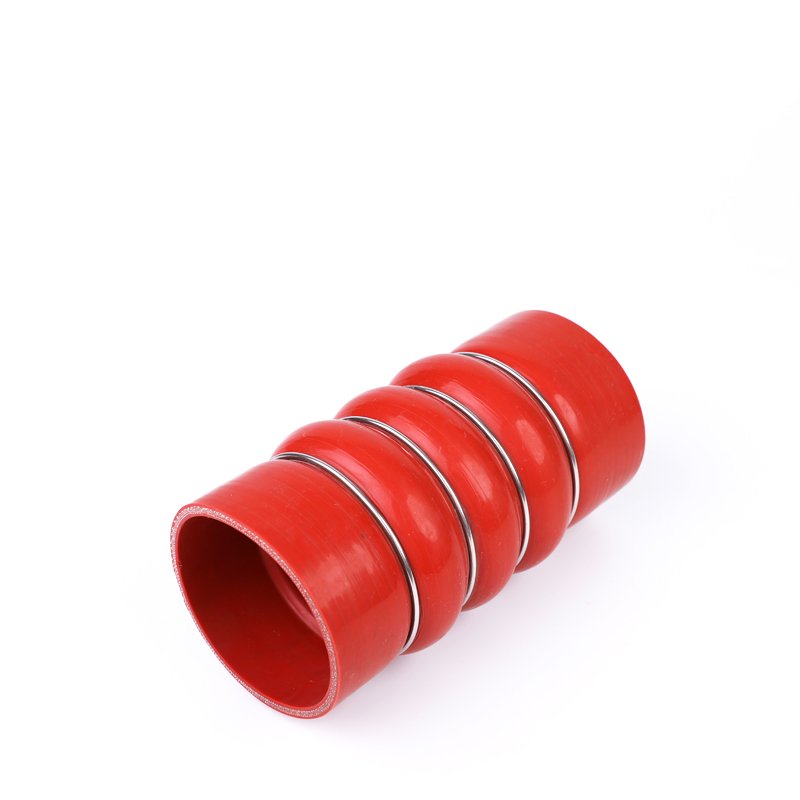Description of silicone hose
what is Automotive silicone hose
Automotive silicone hose is a kind of silicone rubber product used to convey gas, liquid, paddle, or granular materials. It is composed of inner and outer rubber layers and a skeleton layer. The skeleton layer material can be cotton fiber, various synthetic fibers, carbon fiber or asbestos, steel wire, 등. 일반적으로, the inner and outer layer materials of automotive silicone hoses are made of natural rubber, styrene-butadiene rubber, or butadiene rubber, and the oil-resistant hoses are made of neoprene, 고무, 산, and alkali-resistant, and high-temperature-resistant hoses are made of ethylene-propylene rubber, fluoro rubber or silicone rubber. Because of its advantages of easy bending, cushioning, 경량, and convenient installation and use, it is widely used, such as the irrigation and drainage of farmland in agriculture, suction and discharge mud paddles in harbor dredging, hydraulic systems, and pneumatic systems in aircraft, tanks, 자동차, and much mechanical equipment, the fuel system uses many silicone tubes.
Automotive Silicone Hose Composition Structure
The inner rubber layer of the automotive silicone hose directly bears the wear and erosion of the conveying medium and prevents it from leaking. The outer rubber layer protects the skeleton layer from external damage and erosion. The skeleton layer is the pressure-bearing layer of the rubber hose, giving the pipe body strength and rigidity. The working pressure depends on the material and structure of the skeleton layer. According to the material structure of the skeleton layer, it can be divided into full rubber hose (no fabric material), cloth hose (skeleton layer is cloth layer), suction hose (there is a layer of metal spiral outside the cloth layer), braided hose (skeleton layer is braided) steel wire or fabric), winding rubber hose (skeleton layer is steel wire or wire rope winding layer), knitted rubber hose (skeleton layer is knitted fabric), staple fiber hose (short fiber and rubber are blended and pressed). Among them, the suction hose works under negative pressure, and the steel wire braided hose or winding hose can withstand 80 or even higher pressure.
Process of producing automotive silicone hoses
The basic process of the production of automotive silicone hose is rubber compound processing, cord (cord) and canvas processing, hose molding, vulcanization, 등. For rubber hoses with different structures and different skeletons, the processing methods of the skeleton layer and the rubber hose forming equipment are different. Because the full rubber hose does not contain a skeleton layer, it only needs to be extruded by an extruder, and the cloth hose needs to use a molding machine that wraps the rubber cloth on the inner rubber layer. When the suction hose is formed, it needs to wrap the metal helical wire first and then wrap the inner rubber. The weaving and winding hose needs to use a special fabric braiding machine or winding machine, and the knitting hose needs to use a weaving machine.
silicone hose Describe
Silicone hose, due to its unique physical and chemical properties, is widely used in many industries, such as pharmaceutical, biotechnology, 의료, 음식, 기계 제조, 건설, power industry, and many other fields.
The physicochemical properties of silicone hoses depend on their composition. Because manufacturers offer a wide variety of rubber types, as well as various fillers, crosslinkers and other ingredients, as well as different processing methods, it is possible to match the properties of silicone hoses to specific operating conditions and customer expectations.
성능
Resistant to low and high temperatures, with only minor changes in physical properties,
dielectric breakdown characteristics,
good oxidation resistance,
physiological inertia,
High compressibility and elasticity,
tear resistance
Excellent resistance to infrared radiation, 자외선, 자외선, and weather conditions,
Resistant to low-pressure steam up to 3 atmospheres. (high-pressure steam causes partial degradation of the silicone),
Lack of resistance to concentrated acids, 알칼리, and petrochemical products containing aromatics.


